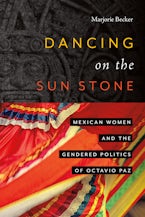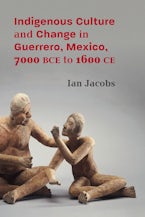Jerónimo Antonio Gil and the Idea of the Spanish Enlightenment
Published by: University of New Mexico Press
Examining the career of a largely unstudied eighteenth-century engraver, this book establishes Jerónimo Antonio Gil, a man immersed within the complicated culture and politics of the Spanish empire, as a major figure in the history of both Spanish and Mexican art. Donahue-Wallace examines Gil as an artist, tracing his education, entry into professional life, appointment to the Mexico City mint, and foundation of the Royal Academy of the Three Noble Arts of San Carlos. She analyzes the archival and visual materials he left behind and, most importantly, she considers the ideas, philosophies, and principles of his era, those who espoused them, and how Gil responded to them. Although frustrated by resistance from the faculty and colleagues he brought to his academy, Gil would leave a lasting influence on the Mexican art scene as local artists continued to benefit from his legacy at the Mexican academy.
Kelly Donahue-Wallace is professor of art history at the University of North Texas. She is the author Art and Architecture of Viceregal Latin America, 1521â€"1821 (UNM Press).
"Sedulously researched. . . . The reader whose understanding of the Spanish Enlightenment is already well formed (and overlaps with Donahue-Wallace's) will find in the book a rich catalogue of vignettes of Enlightenment reform."--Elsa Costa, The Latin Americanist
"Comprising as much institutional history as biography and history of taste and aesthetics, this exemplary book represents a significant contribution to the history of eighteenth-century Iberian art in the age of Enlightenment."--Ilona Katzew, caa.reviews
"The seven chapters of Kelly Donahue-Wallace's profusely illustrated and thoroughly documented study present the most comprehensive and up-to-date biography of Jerónimo Antonio Gil, a key figure in the artistic and cultural milieu of the Hispanic Enlightenment."--Luis J. Gordo-Peláez, Bulletin of the Comediantes
"Donahue-Wallace brings her formidable expertise in print history and theory to bear on the text. . . . The book is remarkable in its interweaving of conceptions of the Spanish Enlightenment and the practical realities faced by artists in this period through the example of Gil's life and career."--Colonial Latin American Review
"The book is extremely well‐researched from a wide range of archives in both Spain and Mexico."--Bulletin of Latin American Research










